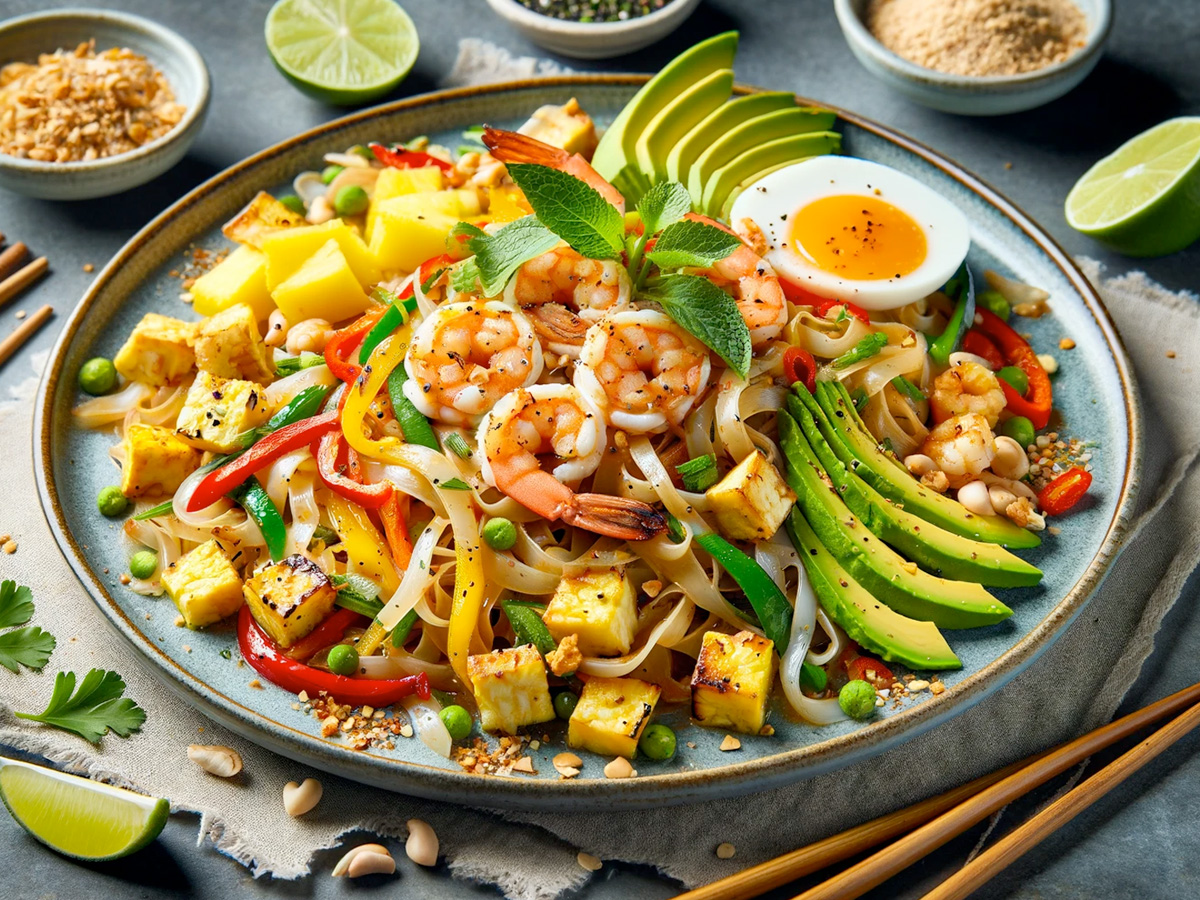Traditional Pad Thai and fusion Pad Thai differ primarily in their ingredients and flavor profiles. Traditional Pad Thai is a classic Thai street food dish with a well-established recipe, typically featuring stir-fried rice noodles, a protein like shrimp or chicken, tamarind paste, fish sauce, garlic, eggs, bean sprouts, green onions, and peanuts. It's known for its balanced sweet, sour, and savory flavors. Fusion Pad Thai, on the other hand, embraces creative culinary twists, incorporating non-traditional ingredients like avocado, pineapple, different types of meats or seafood, or even alternative sauces and spices. This adaptation leads to a broader flavor spectrum and often reflects a blend of Thai cuisine with elements from other culinary traditions, resulting in unique and sometimes unexpected taste experiences. Read More...
In the heart of Southeast Asia lies Thailand, a country renowned for its rich cultural heritage and vibrant culinary landscape. Among its myriad of tantalizing dishes, Pad Thai stands out as the quintessential Thai meal, beloved by locals and global food enthusiasts alike. This article delves into the history, ingredients, preparation, and global influence of Pad Thai, exploring why this dish is not just food, but a symbol of Thai identity.
Pad Thai, or “Phat Thai,” has a history as colorful as its ingredients. Contrary to popular belief, the dish’s origin is relatively recent, tracing back to the 1930s. It was during Thailand’s nationalistic push that Prime Minister Plaek Phibunsongkhram promoted Pad Thai as a symbol of Thai pride. The dish, with its accessible and inexpensive ingredients, was an instant hit, quickly becoming a staple in Thai cuisine.
Pad Thai’s journey from the streets of Thailand to the global stage is a testament to its universal appeal. Its simplicity allows it to be easily adapted, making it a favorite in restaurants worldwide. Chefs across the globe have put their spin on it, adding ingredients like avocado, crab meat, or even unconventional sauces. Despite these variations, the essence of Pad Thai—its balance of flavors and textures—remains unchanged.
More than just a dish, Pad Thai is a narrative of Thailand’s history and cultural evolution. It reflects the country’s ability to adapt and innovate while holding onto its traditions. Eating Pad Thai in the bustling streets of Bangkok or a cozy restaurant overseas is not just a culinary experience; it’s a journey through Thai culture and history.
Pad Thai is more than just Thailand’s national dish; it’s a culinary icon, encapsulating the essence of Thai cooking. Its perfect balance of sweet, sour, and savory notes, combined with the richness of its history, makes Pad Thai a dish that transcends borders and cultures. As it continues to delight palates around the world, Pad Thai stands as a proud representation of Thailand’s rich culinary heritage, inviting everyone to savor a taste of its timeless charm.
Prepare Noodles: Soak the rice noodles in warm water for 10-15 minutes, then drain.
Make the Sauce: In a bowl, combine tamarind paste, fish sauce or soy sauce, brown sugar, and chili flakes. Adjust according to taste.
Cook Protein: Heat oil in a large wok or pan over medium-high heat. Add your choice of protein and cook until done. Remove and set aside.
Sauté Vegetables: In the same pan, add a bit more oil. Sauté garlic, onions, and bell peppers until slightly softened.
Scramble Eggs: Push the vegetables to the side, add the beaten eggs to the pan, and scramble.
Combine Noodles & Sauce: Add the drained noodles to the pan, pour the sauce over them, and toss to combine.
Add Pineapple & Protein: Add the cooked protein and pineapple to the wok. Mix well.
Final Touches: Turn off the heat. Gently fold in the avocado slices, bean sprouts, and green onions.

Serve: Serve hot, garnished with crushed peanuts and lime wedges on the side.
Preparation Time: About 10-15 minutes to soak the rice noodles, chop the ingredients like garlic, green onions, and proteins (shrimp, chicken, or tofu), and prepare the Pad Thai sauce (mixing tamarind paste, fish sauce, sugar, and chili pepper).
Cooking Time: Approximately 10-15 minutes. The actual cooking involves quickly stir-frying the ingredients in a hot wok or pan. This process is fast-paced, as overcooking can lead to mushy noodles or rubbery proteins.
The calorie content in Pad Thai can vary depending on the ingredients used and the serving size. On average, a typical serving of restaurant-style Pad Thai with shrimp or chicken can contain between 600 to 1,000 calories.







